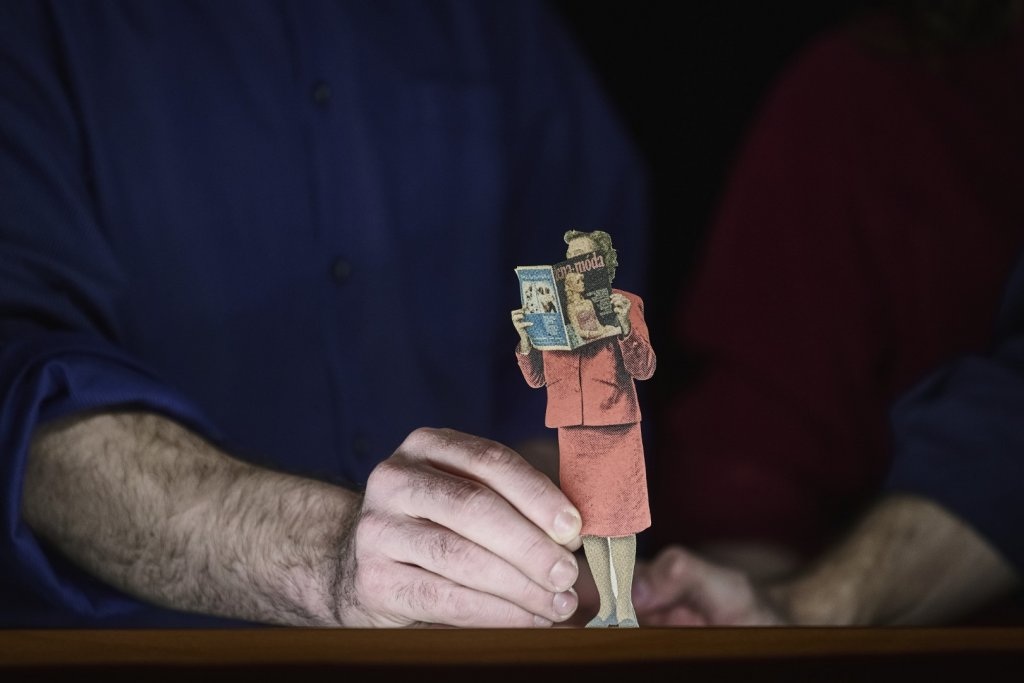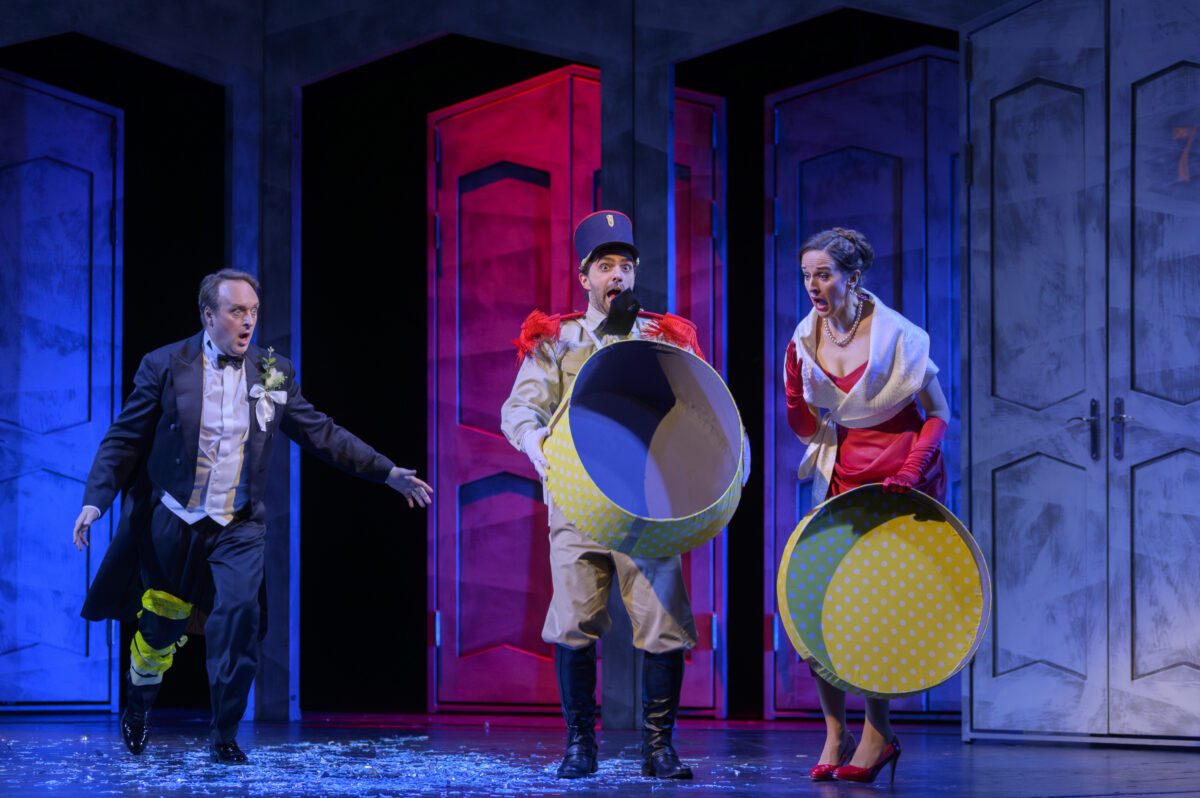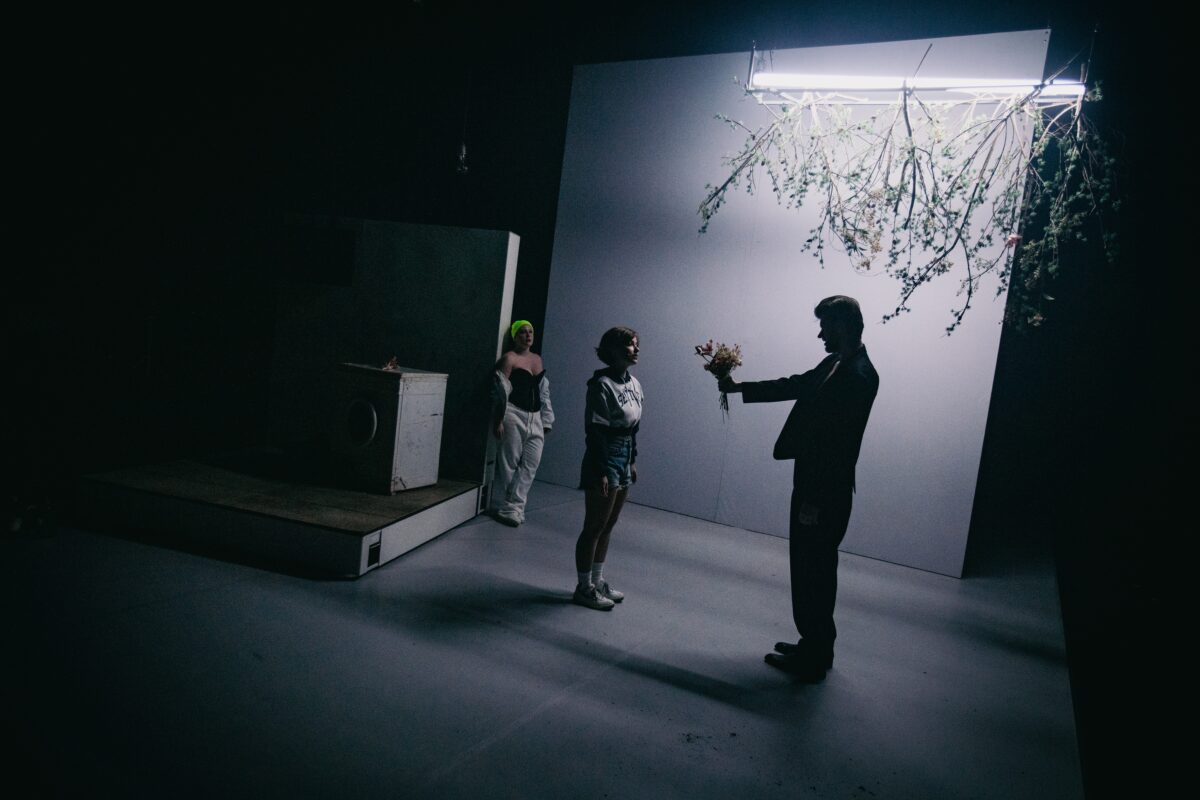
Interview by Vladimír Mikulka
Luděk Horký
A graduate of the Department of Theatre and Film Studies at Charles University’s Faculty of Arts, Luděk Horký works as a dramaturg for theatre and television and is also a journalist and lecturer. Since 2013, he has led Czech Television’s Centre of Dramaturgical Creative Production for Children and Youth and also participated in the preparation and launch of the dedicated children’s channel ČT:D. He is an external lecturer at Charles University’s Faculty of Arts with a focus on the theory and history of the performing arts for children. He chairs the Czech Centre of the International Association of Theatre for Children and Young People (ASSITEJ).
How can theatre for children be defined or delimited? Is it possible to distinguish precisely what is and is not theatre for children?
Above all: theatre for children should have the same parameters as “normal” theatre. There should be no didactic scenes containing theatrical elements, such as when a teacher explains something using a puppet, for example. The difference is that theatre for children should be understandable in the language it chooses and in its approach to working with topics and motifs, so that it doesn’t “outrun” the life experience of its audience.
Are there other differences that separate theatre for children from theatre for adults?
I think these are more or less operational things. For example, it’s better to perform theatre for children in smaller venues, ideally with a capacity of up to 100, it’s necessary to stick to a certain duration, the ticket prices can’t be too high. And one more essential thing: children don’t decide for themselves what theatre they will go to see. It’s usually a parent, or a teacher, who decides, which has a big impact on how the production is framed and communicated.
Is there an empirical guideline as to how long of a performance children can manage?
With older children, let’s say eight and up, I think the quality of the performance is first and foremost. I see no reason why children shouldn’t be able to manage a well-constructed fairy tale in two 40-minute acts with an interval. At the same time, it’s also true that it’s good to work with rhythm, to let the children relax emotionally after a tense section, whether it’s with a more comedic scene or the obligatory musical interlude. Which of course should not give rise to the bad habit of inserting songs where they have no dramaturgical purpose. The performances for toddlers, intended for children of up to three years of age, that are popular now are something completely different. Performances for this age group don’t tell stories, of course; instead, they heighten children’s perception in a thoughtful way. The duration should be a maximum of half an hour.
Is there anything that theatre for children should absolutely avoid?
Underestimating the audience. Baby talk and gibberish. The idea that theatre is first and foremost to entertain children. A clown at a party knows how to do that, there’s no need for theatre.
Could it be said that contemporary Czech children’s theatre has fundamentally changed in recent years, in terms of what topics are or can be treated?
The first fundamental change came roughly twenty years ago, when the long-lasting taboo about depicting death in children’s theatre was lifted. In a way, this is a return – death regularly appeared in classic fairy tales by Erben or Němcová. Recently, social and political topics have made their way into theatre for children. In this sense, politics shows itself as part of society. When Jan Jirků presented the production Zá-to-pek!,[1] he not only showed the story of Emil Zátopek, but also the political background against which it played out. The creative tandem of Jakub Vašíček and Tomáš Jarkovský, who work primarily at DRAK Theatre in Hradec Králové, have a whole “theatre of initiation” series, in which they deal with issues linked to entering adult life. Previously, parents and teachers would have angrily protested something like this, following the traditional belief that politics, religion and sex are things children should learn about at home and nowhere else. I think that in state theatres for children, there is no taboo that exists today that would cause artists to say, “we would like to do that, but we wouldn’t get away with it”. At least in the good theatres, which are granted artistic freedom by their establishing bodies.
What is the proportion of original texts in Czech theatre for children, as compared to classic plays, dramatisations and translations? Can this be somehow quantified?
Yes, though I don’t know the precise numbers. Original, authorial theatre prevails in a really significant way if we count free adaptations of classic material. We lack dramatic literature in translation, which is a pity. Unfortunately, Czech children’s theatre can’t afford to pay royalties.
How many Czech authors specialise entirely, or in part, in work for children and young people?
There are excellent authors here, but they must make a major part of their living doing something else. From the older generation, I would mention Daniela Fischerová and, from the younger, Vítek Peřina, David Košťák and Natálie Strýčková Preslová, for example. For specialised theatres, it is a matter of prestige to look for new texts. Public theatres communicate well with one another, and so duplication is deftly avoided. But sometimes a common topic appears and several venues will respond simultaneously, through their own productions. Recently, Prague City Theatres and DRAK Theatre had a collective project, Antigona (Antigone).[2]
How difficult is it to obtain financing for children’s theatre? I suppose that every theatre deals with insufficient funds as a fundamental issue, but is the situation different in children’s theatre than in theatre for adults?
The basis is the same, but in the case of theatre for children, it’s more difficult to find multi-source funding. Children are easy targets for advertising. If you want to protect them from advertising, which strikes me as ethical, it’s hard to find sponsors. The revenue element is also quite complex. Commercial “family theatre” productions can sustain themselves, but typically these are musicals for which audiences are willing to pay quite high ticket prices. They are in any case not productions intended for schools. Non-commercial theatres for children have a hard time: they perform in smaller spaces and can’t set high ticket prices.
Can you estimate how many theatres there are for children and young people in the Czech Republic? From puppeteers with suitcases performing in kindergartens to big theatres with several stages, like Minor Theatre. And are there enough of them?
I don’t know the exact number, but in general, it can be said that, in terms of quantity, the offer is sufficient, just as in the case of theatres for adults. It’s worse when it comes to high-level theatre, whether produced by public theatres for children and young people or by quality independent ensembles. Understandably, it generally applies that the smaller the city, the narrower the range of independent theatre, but even in Prague, for example, at least one more permanent theatre for children and young people with daily activities is palpably absent.
What role do theatre schools play in children’s theatre? Is there a way of directing students towards theatre for children, or is it seen as a last resort for graduates?
Theatre for children is often an intermediary step, where artists see what it’s like to work in professional conditions. There is nothing wrong with this, as long as a situation does not arise, as unfortunately happens sometimes in regional theatres, where “it’s necessary to do something for children quickly and cheaply, let’s get the young ones on it, let them have a go”. The Prague production unit Damúza is an opposite example; it was established to create a space between the “sheltered workshop” environment of school and the tough world of professionals and provides dramaturgically sound opportunities for early career artists. Though not by design, Damúza regularly focuses on theatre for children and does so at a good level of quality.
Are there any programs focused on theatre for children in theatre schools?
It’s haphazard. For example, at the Theatre Faculty of the Academy of Performing Arts in Prague (DAMU), there is no such program, nor has there been in the past ten years. The Studio of Educational Theatre for the Deaf led by Zoja Mikotová at the Janáček Academy of Performing Arts in Brno came close to something like this. Of course, DAMU has the Department of Drama in Education, but nothing creative as such. However, it encourages its students to at least know their way around and be able to think about theatre for children and young people. Some of the professional acting schools are also devoted to theatre for children, but there I have the sense that expediency prevails. Children are an easily accessible audience, so they just target them with weekend fairytale productions.
An abridged and edited version of an interview published in the magazine Svět a divadlo (World and Theatre) 5/2023.
[1] Jan Jirků: Zá-to-pek!, direction: Jan Jirků, premiere 6.10.2019, Minor Theatre, Prague.
[2] Sofoklés, Tomáš Jarkovský, Jakub Vašíček: Antigona, direction: Jakub Vašíček, premiere 13.5.2022 Hradec Králové and 4.6.2022 Prague, Divadlo DRAK and Městská divadla pražská, Hradec Králové and Prague.
categories
Interview / Young Audience

 Learn
Learn







